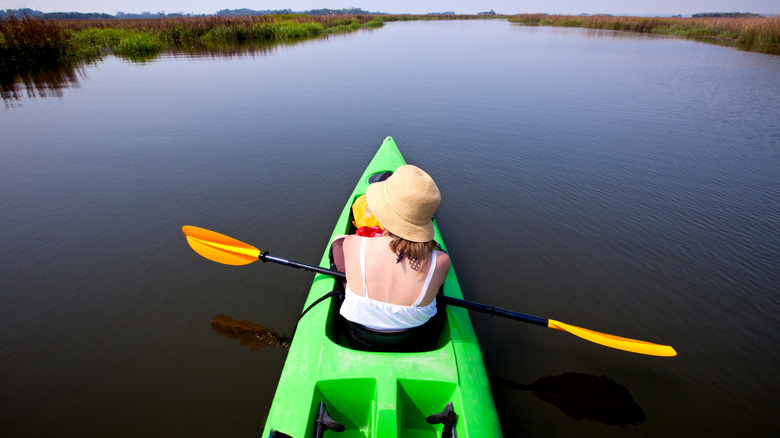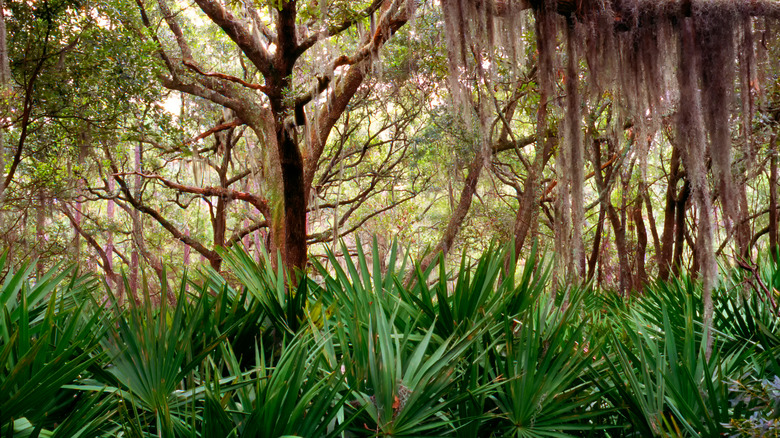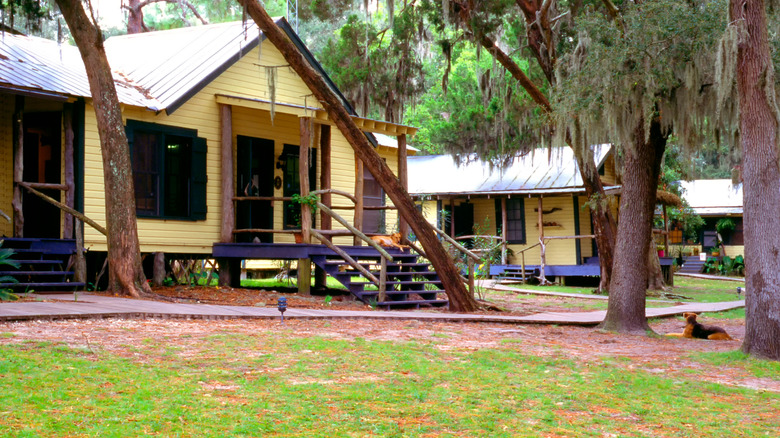Georgia's Secret Coastal Haven Is A Pristine Barrier Island With Dazzling Beaches And Scenic Marshes
What springs to mind when you think about Georgia (the state, not the country)? Your brain likely blurts out "peaches." Fair enough. Yet the wild, untouched magic of the state's coastline, sandwiched between Florida and the Carolinas, merits more attention. It has barrier islands with beaches that rival Australia's. Cumberland Island, one of its crown jewels, boasts endless trails and pristine beaches. Little St. Simons Island adds to the allure, offering more dazzling beaches and scenic marshes on another untouched barrier island that's only about two hours from Savannah. The embarrassment of seaside riches means The Peach State could easily be renamed The Beach State.
The privately owned coastal haven on the Altamaha River delta opened to the public in 1979 and, from the outset, preserved its untouched wilderness, protecting it from humanity's worst instincts. It's one of ten barrier islands in Georgia that haven't been developed, lacking basic infrastructure like roads. You can only get there by boat. The conservation-first mentality has helped keep Little St. Simons Island a vital habitat for local vegetation, wildlife, and migratory birds. That mentality reaches into its guest program — even the island's lodge serves the ongoing preservation and education work.
Every visit to Little St. Simons will be unique; the island is constantly growing and changing. The self-propelled system shows nature's development in stages. Dunes at the far end of the shore become grasslands, which eventually, moving further inland, turn into old-growth forests. It all adds up to an incredible amount of adventure and exploration awaiting every visitor.
Explore acres of untouched wilderness
Little St. Simons Island comprises 11,000 acres of pristine wild landscape, mixing salt marshes with inland hills to form an intoxicating mix of soothing nature and visual beauty. The lack of human intervention and development has kept Georgia's barrier islands, including Little St. Simons, a perfect distillation of what the East Coast would look like had the bulldozers and cement trucks been kept away. Locals know the rare treasure they have and work to keep it that way. The Center for Coastal Conservation, located on the island, ensures the ecosystems remain protected and conserved. The resulting mix of wildlife and undisturbed shoreline allows nature to chug along. Migratory birds, for example, keep Little St. Simons on their itinerary for its immaculate habitat.
The island includes seven miles of shoreline, which guests can explore on foot, by bike, or by going for a swim. Visitors can also tug seine nets through the water, with a naturalist deciphering what's pulled ashore. A little further inland, you'll find salt marshes to explore; Georgia has 33 percent of the East Coast's remaining salt marshes, with a unique ecosystem to match.
The best way to see the island is by booking guided experiences with the in-house naturalists as part of an overnight stay. Visitors have many options, from pick-up truck safaris to kayaking. Guests can also make solo trips into the untouched wild, with fishing, biking, or hiking along the 26 miles of trails and roads. One-off events run the gamut from shark workshops to birding days and many things in between. Those simply passing through can book pre-scheduled day trips, which let you explore the island, costing about $200 per person. Be sure to make reservations in advance.
How to visit Little St. Simons
Those flying to Little St. Simons should book a flight to Savannah/Hilton Head International Airport. Any trip to the island must include a visit to Brunswick, a quiet coastal town that serves as the gateway to Georgia's Golden Isles.
The lodge on Little St. Simons Island is the best way to get an up-close view of the habitat. The all-inclusive accommodations have all the modern conveniences you'd expect, like Wi-Fi, while giving you full access to the island, including conservation and educational programs. Guests staying overnight also get full access to adventure supplies, from kayaks to binoculars and fishing rods. The lodgings can accommodate a maximum of 32 guests, and prices reflect the exclusivity. The Hunting Lodge, for example, will cost between $700 and $800 a night during the high season. You can even book the entire island for yourself, giving your close circle of friends or family a chance to connect with each other and nature.
Little St. Simons conservation-first mentality still lets you enjoy some creature comforts. There is no bad time to visit Georgia's Golden Isles, with each season offering its own upsides and downsides. Be sure to pack comfy shoes, a change of clothes, and sunblock.


